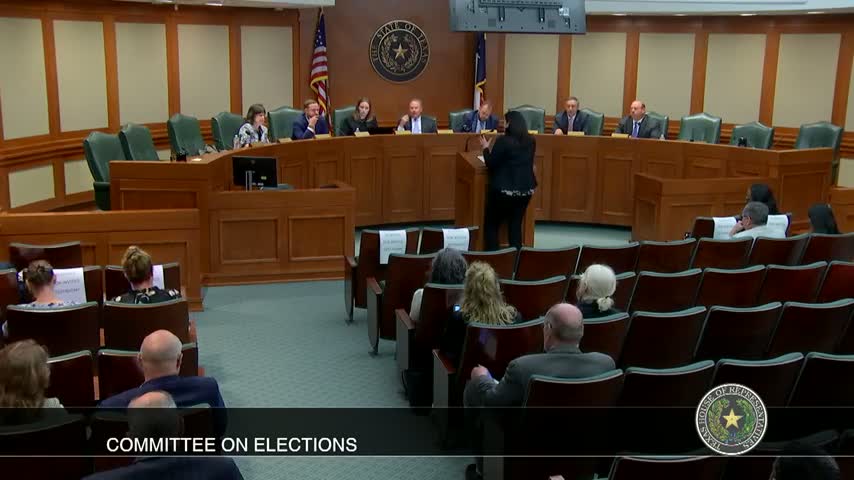Voter privacy at risk amid ballot identification concerns
June 12, 2024 | Committee on Elections, HOUSE OF REPRESENTATIVES, Legislative, Texas

This article was created by AI summarizing key points discussed. AI makes mistakes, so for full details and context, please refer to the video of the full meeting. Please report any errors so we can fix them. Report an error »

In a recent government meeting, officials discussed the complexities surrounding voter anonymity and ballot identification methods. The conversation centered on the potential for identifying individual ballots through publicly available information, particularly in limited circumstances.
One official explained that while it is possible to determine how a voter has voted or where they voted using a process of elimination, this method relies heavily on the granularity of public data. Factors such as the date, time, and location of voting, as well as whether ballots were cast by mail or provisionally, play a crucial role in this identification process. The more detailed the public data, the easier it becomes to link a specific ballot to an individual voter.
The discussion also touched on a controversial algorithm mentioned in ongoing litigation, which allegedly connects voters to their ballots via ballot numbers. However, officials noted that they have not seen this algorithm and cannot comment on its validity or applicability across different voting systems.
Importantly, the officials clarified that the process of elimination method is not dependent on the voting system or technology used at polling places. This means that even in scenarios involving hand-counted ballots, the potential for identifying individual ballots remains, particularly among smaller groups of mail-in voters in selected precincts.
As the conversation continues, the implications of these identification methods raise significant questions about voter privacy and the integrity of the electoral process.
One official explained that while it is possible to determine how a voter has voted or where they voted using a process of elimination, this method relies heavily on the granularity of public data. Factors such as the date, time, and location of voting, as well as whether ballots were cast by mail or provisionally, play a crucial role in this identification process. The more detailed the public data, the easier it becomes to link a specific ballot to an individual voter.
The discussion also touched on a controversial algorithm mentioned in ongoing litigation, which allegedly connects voters to their ballots via ballot numbers. However, officials noted that they have not seen this algorithm and cannot comment on its validity or applicability across different voting systems.
Importantly, the officials clarified that the process of elimination method is not dependent on the voting system or technology used at polling places. This means that even in scenarios involving hand-counted ballots, the potential for identifying individual ballots remains, particularly among smaller groups of mail-in voters in selected precincts.
As the conversation continues, the implications of these identification methods raise significant questions about voter privacy and the integrity of the electoral process.
View full meeting
This article is based on a recent meeting—watch the full video and explore the complete transcript for deeper insights into the discussion.
View full meeting
